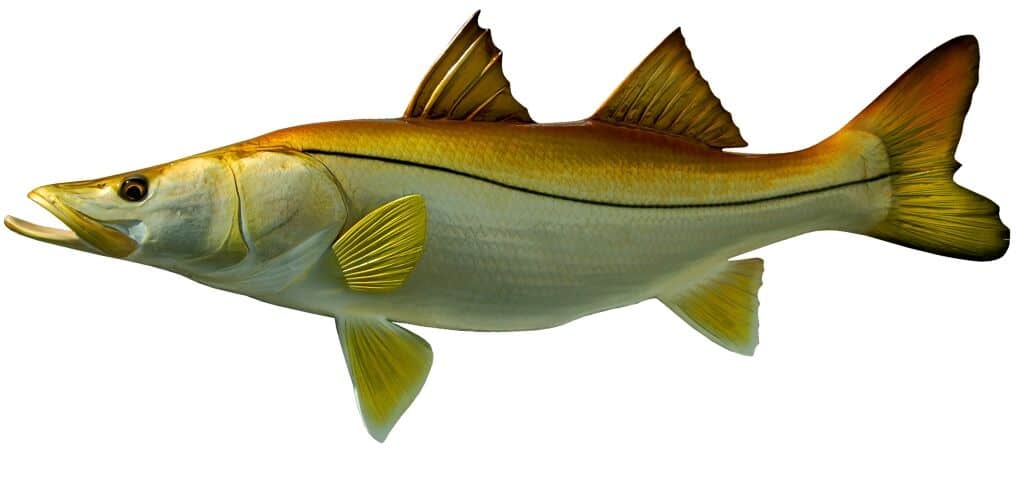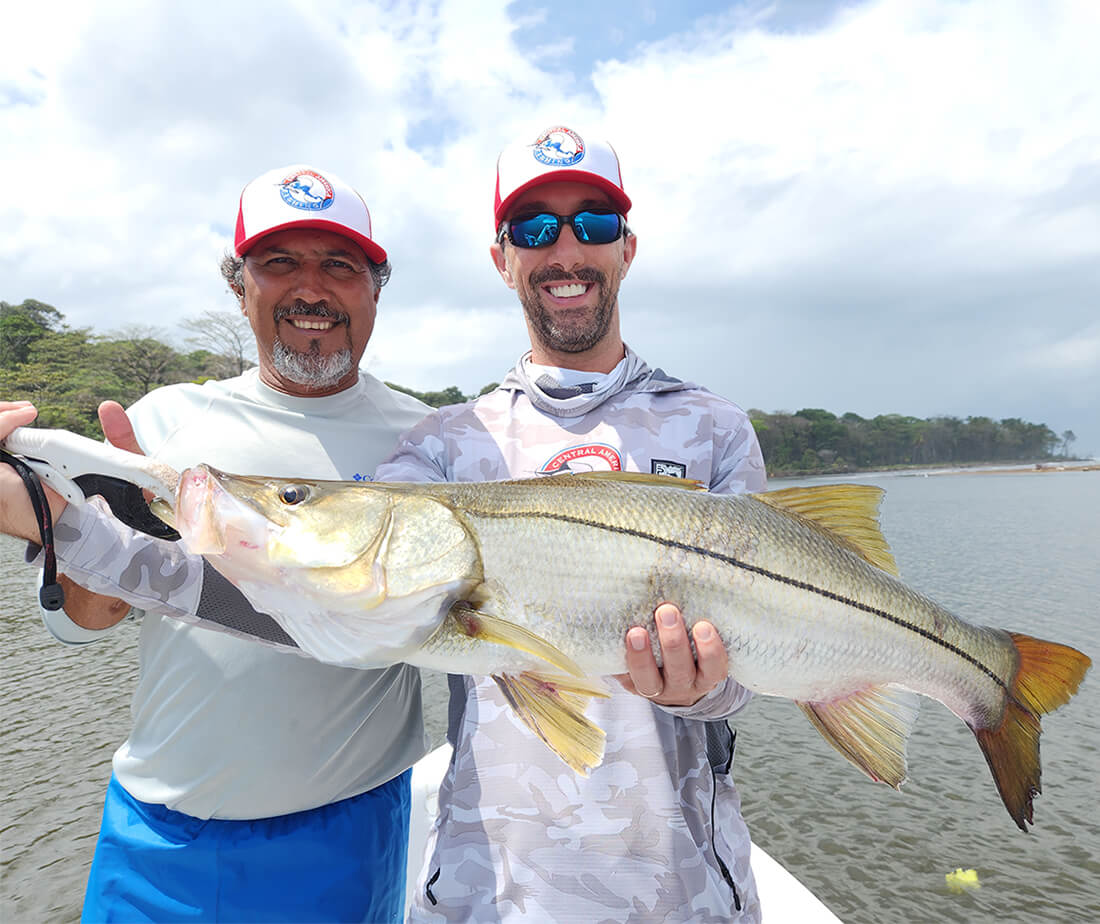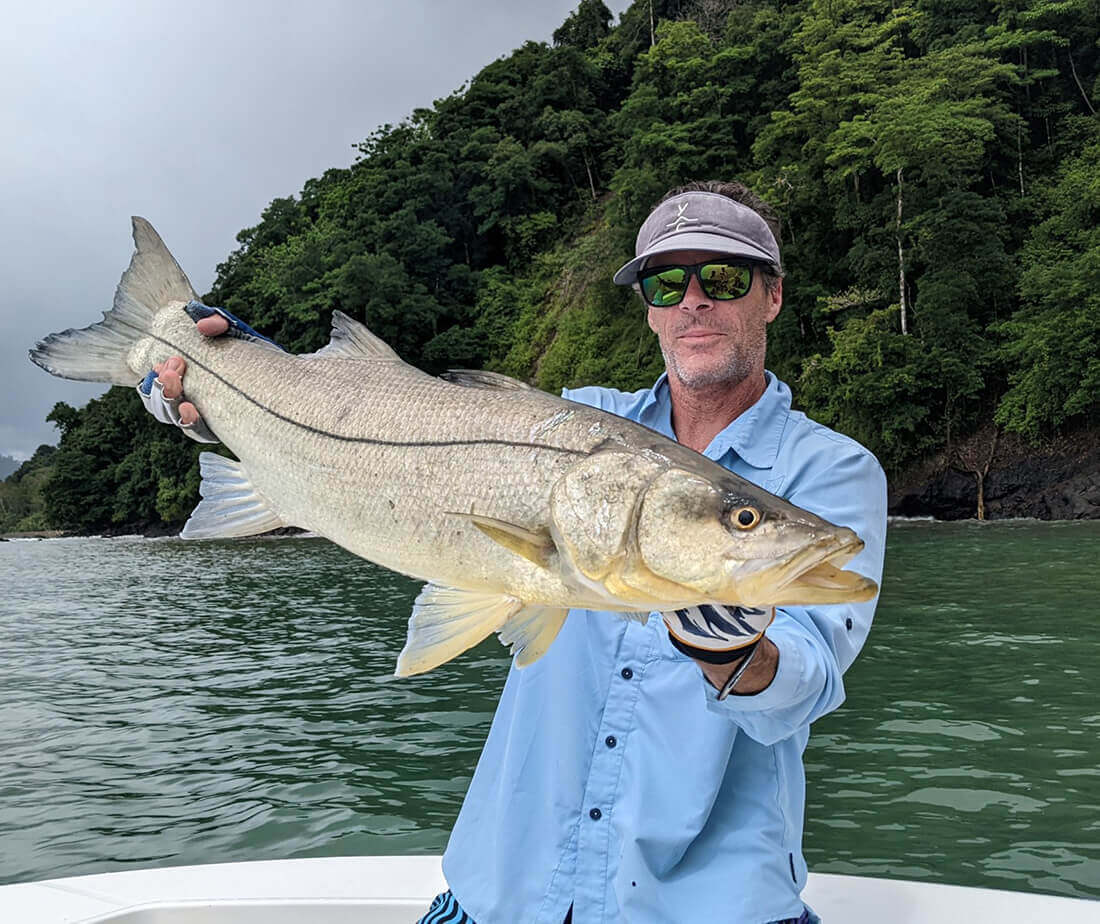Snook Fish

Snook Fish are found in warm coastal waters all over the globe. Similar to tarpon, snook are often found in brackish water and can live in freshwater as well. They’ve been known to travel inland many miles from the ocean, but it is done seasonally which probably means it is for spawning purposes. Similar to tarpon, snook can travel inland to avoid the plentitude of salt water predators and use lagoons and mangroves as nurseries.
There are six species of snook that inhabit the Pacific Ocean and six more on the Atlantic Ocean, but not a single one that occurs in both oceans simultaneously. Snook vary in color based on their habitat and diets so they can be olive, green-silver, brown, yellowy-brown, or black. Not to worry, the defining feature that makes each snook instantly recognizable is their dark black lateral line running down each side of their body. They also posses two dorsal fins and a protruding bottom jaw so they are not easily confused with other fish.
Most snook we catch are in the 15-30 lb range, but each year we see a 40 pounder landed. The world record snook (54 lbs) still belongs to Costa Rica’s Caribbean Coast. Snook have a delicious soft white meat that is coveted by anglers around the world. Lightly flavored on the grill or frying pan, snook are also one of our favorites for fresh ceviche. They reach maturity by the age of three and have a seven year life span so they are a very fast growing species.
What They Eat?
A snook’s diet typically consists of other smaller fish and crustaceans. They are often found in mangroves and river mouths with rising and falling tides as they’ll scoop up sardines, juvenile fish, and shrimp that get washed out.
Where To Find Them?
Snook are found in a variety of warm shallow coastal waters, river mouths, estuaries, lagoons, and mangroves. They are adaptable to salt water, brackish water, and fresh water. They can most often be found feeding with rising and falling tides.



